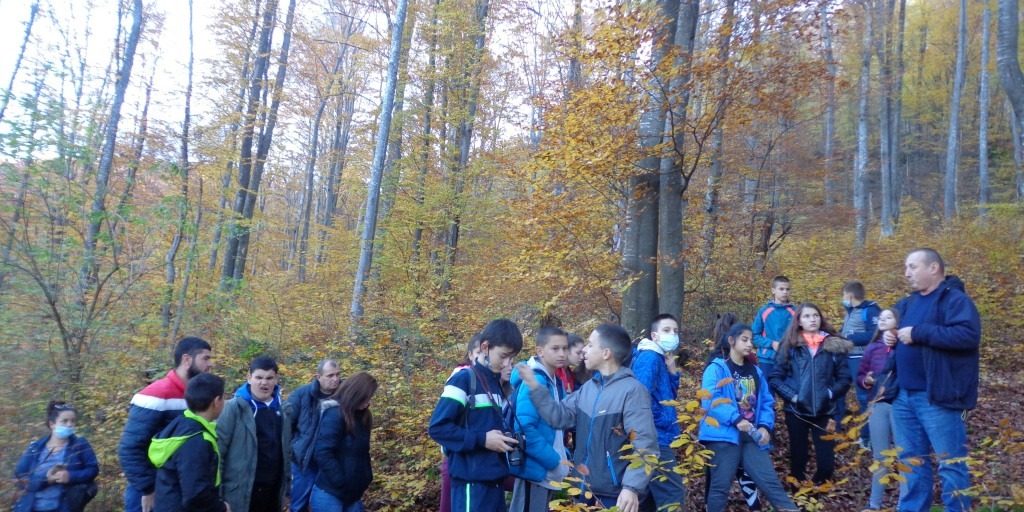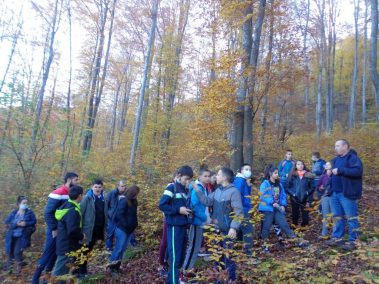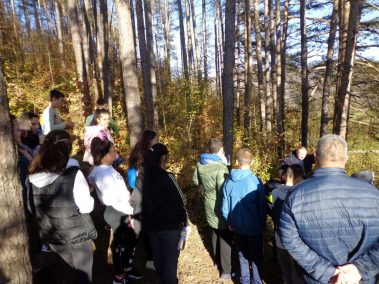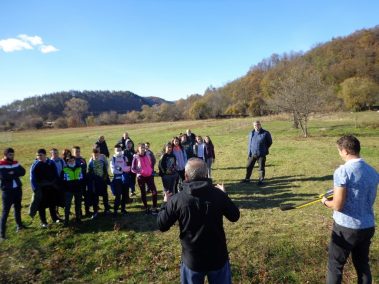For Scientific report of Activity 4, please follow the link:
Among the most important and interesting activities carried out under the youth project “For everyone saved a tree” (FOREST) from the Bulgarian-Serbian cooperation program is the training in forest protection conducted in the forests of Etropolska Stara Planina in the period 16-18 November 2020. Project participants were familiar with the most current and innovative methods for identifying insect pests and fungal pathogens in forest ecosystems, their impact on forest vegetation and methods for their control. The Forest Research Institute at the Bulgarian Academy of Sciences (project partner), with the assistance of the Center for Natural and Social Research, attracts experts from various scientific specialties involved in the main tasks of youth education.
The theoretical training was conducted with presentations on the most common and economically significant pests and diseases in forests, assessment of the health of plantations and silvicultural activities aimed at improving the condition of forests. Detailed information , is presented concernicg the purpose and tasks of the project and the functionality of Joint Bulgarian-Serbian Database, developed in the process of its implementation.
The use of an unmanned aerial system equipped with a multispectral camera for capturing forests as a basis for remote assessment of the health status of tree species and mapping of the affected areas has been demonstrated. The possibilities for application of Geographic Information Systems (GIS) and mapping and assessment of forest ecosystem services (MAES) were shown.
The practical training was carried out in coniferous and deciduous plantations, with the direct participation of young people in the research processes. In the vicinity of the town of Etropole, an artificial stand of white pine in poor health was examined. The invasive fungal pathogen Dothistroma septosporum was identified as a causer of the disease. Attacks by insect pests – Ips sexdentatus and species of the genus Pissodes – have been registered on the trunks of weakened trees. In a natural plantation near the Etropole Monastery, damage from the insect pest Orchestes fagi was observed on the beech leaves. Fruit bodies of the wood-destroying fungi Pholiota aurivella and Fomes fomentarius were found on the stems of beech, and Pholiota adiposa on the stems of the hornbeam. The possibilities for prevention and control of diseases and pests and the application of forestry systems to improve the health of forests were discussed. The project database was filled with information and photos from the surveyed forest plantations.
The final stage of the training includes conducting educational games on the project topics, testing the knowledge through a special test and conducting a group discussion on ‘Protection of forests and natural heritage and the role of young people in the process’. The young people received certificates for participation in the activity.
Identifying pests and pathogens in forest plantations is the first step in their timely control. The informal but systematic involvement of young people in this process will support the work of forest protection specialists and facilitate the implementation of phytosanitary measures in the forests.
The training in forest protection was realized within the project ‘For everyone saved a tree’. The project is co-financed by the European Union through the Cross-Border Cooperation Program Interreg-IPA Bulgaria – Serbia 2014-2020. Project FOREST) №CB007.2.32.170 is co-funded by EU through the Interreg-IPA CBC Bulgaria–Serbia Programme.
This publication has been produced with the assistance of the European Union through the Interreg-IPA CBC Bulgaria-Serbia Programme, CCI No 2014TC16I5CB007. The contents of this publication are the sole responsibility of FRI-BAS and can in no way be taken to reflect the views of the European Union or the Managing Authority of the Programme.
Interreg – IPA CBC Bulgaria – Serbia Programme
CCI Number 2014TC16I5CB007








